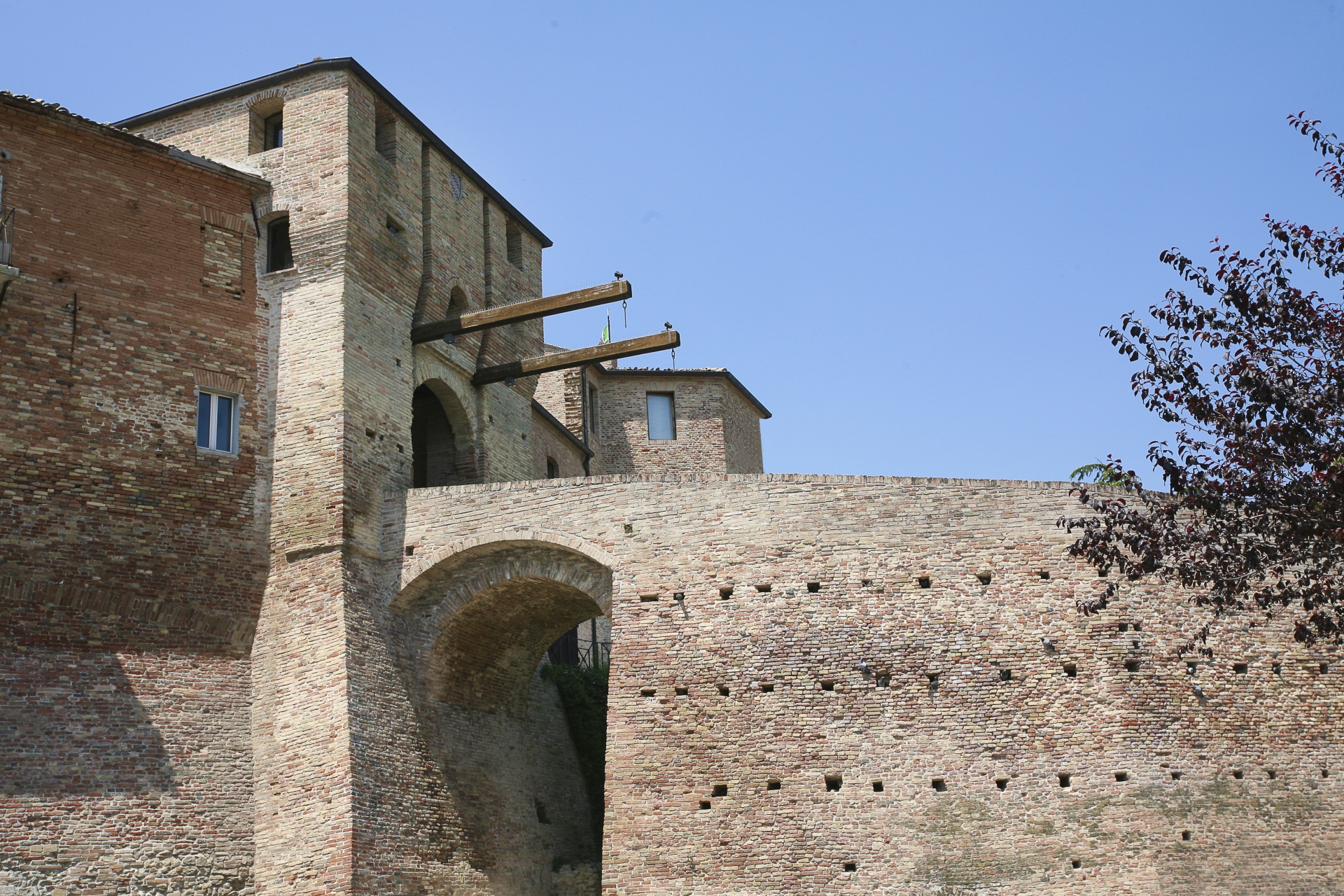Hamlet of Mondaino
The village of Mondaino is a real surprise for all visitors. From its entrance gate you continue on inside a village that extends into the elegant semicircular 19th-century square and towards its Malatesta castle. The territory has a green heart made up of shrubbery and countryside, where fallow deer have grazed which gave it the nickname "mountain of fallow deer".
Porta Marina, which allows access to the town, is of Malatesta origins; in this sense the castle was a strategic point along the defensive line of the Malatesta Seigneury, to maintain control over the dangerous nearby castles and the movements of the Montefeltro troops.
From the gate you reach the Rocca (Fortress) Malatestiana, now the seat of the Town Hall and of the cultural institutions including the Paleontological Section of the Mondaino Museums. The fresco depicting the Madonna del Latte (Our Lady of the Milk) by Bernardino Dolci (15th century), detached from the Poor Clares Monastery, is kept in the room on the top floor, known as the room of the Durantino.
In the basement of the Fortress there are two medieval tunnels created for military purposes and for the water supply.
The Piazza Maggiore in Mondaino dates back to the 19th century and with its semicircular shape defined by the neoclassical portico welcomes the central street of the town: The inhabitants affectionately call it "Padella" (Saucepan). The heart of the town, it has a glimpse of the Malatesta Castle, a treasure trove of works of art and history, and in the summer it is the natural theater of one of the most beautiful historical re-enactments on the Rimini Riviera: the Palio del Daino (the “fallow dear” traditional horse race).
A bit of history
The origins of Mondaino date back to the Etruscans who, in their expansion towards the plains area, overlapped with the Umbrians.
Then the Romans stemmed the invasion of the Gauls and founded the myth of the origin of the town linked to the figure of Diana, goddess of hunting and woods, but also of the moon and witches.
With the spread of the Christian religion, Mons Damarum then turned into Mondaino, which soon assumed considerable geo-political importance when the Malatestas decided to make it a stronghold on the border with the Montefeltro lands.
The family from Rimini was already present in 1289, over the years they strengthened walls and gates, made the fortress more powerful, and it was the scene of political meetings such as the peace pacts signed, the first time by Carlo Malatesta and Antonio da Montefeltro, in 1393, then by Sigismondo Pandolfo and Federico, in 1459.
Federico conquered Mondaino and donated it to the Church. However, this did not lead to its decline, because it remained one of the most important castles in the Conca valley and was enriched over the centuries with beautiful civil and ecclesiastical architecture, firmly maintaining its structure
Ghost and legends
Mondaino's curiosities span ancient history reaching up to the present day.
Castle escape routes to get away from ambushes
Mondaino was one of the most important castles in the Conca Valley. Even today we can admire its walls, which were originally so strong as to count 13 towers, the entrance gate, Porta Marina, complete with embrasures for lifting the drawbridge, the fortress situated on sloping baserock all give a good idea of how imposing and important the fortification was. But the charm is also hidden from our eyes because two long and steep underground tunnels set out right from the Fortress.
Recently rediscovered, they had been partially filled with soil, and they led to the river. They certainly constituted escape routes and were undoubtedly secret passages also for sending out messengers. Alongside military purposes, they were also used for water supply, a find that aroused no small wonder.
Mondaino, a history worthy of "notes"
The curiosities of the place also pass through the history of the Galanti family, and in particular of Antonio Galanti who, between the end of the 1800s and the beginning of the 1900s, earned a living performing as a musician at fairs. It was he who created the first Galanti accordion.
Already in 1917, the Galanti factory - now restored and open to visitors - produces state-of-the-art instruments, both from a technical and from an aesthetic point of view, played by the best accordionists and advertised by the actress Paulette Goddard, first-rate star, film and theater actress, and companion of Charlie Chaplin.
In Mondaino, in 1932, the new Fratelli Galanti factory was inaugurated, adding other instruments to the accordion such as electric guitars, electronic organs and vibraphones. With the ever-present innovative spirit, the new generation of Galantis built the first-ever made-in-Italy electronic organ.


